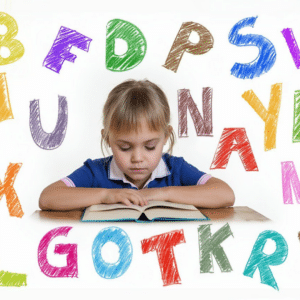What Is Visual Memory
Visual memory is our ability to create and recall mental images.
Visual memory is our ability to create and recall mental images. It lets us picture things in our mind—like a face, a place, or even a word. When a child remembers what a letter looks like, or can imagine the word “dog” and picture a furry friend, that’s visual memory at work.
This skill plays a major role in how we learn. In fact, researchers estimate that around 80% of learning is visual. That means strong visual memory skills are essential for both school success and daily life.
How Visual Memory Supports Literacy
In school, visual memory helps students:
- Recognize letters and numbers
- Remember sight words
- Spell more accurately
- Read with better fluency and comprehension
- Copy notes quickly from a screen or board
- Picture the meaning of words (like imagining a dog after reading “dog”)
Outside the classroom, it helps with:
- Finding things like keys, shoes, or phones
- Giving or following directions
- Remembering phone numbers or addresses
- Recalling important memories or daily events
Signs of Visual Memory Challenges
If a child struggles with visual memory, you might notice:
- Trouble copying words, letters, or numbers
- Slow reading or writing
- Frequent spelling mistakes
- Difficulty recognizing familiar words
- Sounding out every word instead of reading smoothly
- Poor reading comprehension or trouble recalling story details
- Confusing similar-looking letters like b/d or p/q
- Struggling with math symbols or copying problems accurately
If these issues sound familiar, it’s a good idea to get a professional evaluation. Visual memory is closely linked to learning, and early support can make a big difference.
How to Improve Visual Memory
Visual memory can be strengthened with practice, just like a muscle. Here are some helpful and fun ways to boost it:
- Play memory games (matching cards, word games, rhyming games)
- Try “I Spy” games to encourage visual attention and recall
- Look at a picture, then take it away and describe what you saw
- Practice visualizing words like “alien” and describe the image in detail
- Recall daily events out loud (“What did we see on the way to school?”)
- Use matching games to build memory for symbols and patterns
These exercises can improve reading, spelling, and attention to detail over time.
Visual memory is more than just remembering what things look like—it’s a key part of how we learn to read, write, and make sense of the world. If a child struggles with this skill, the right tools and support can help build confidence and academic success.




